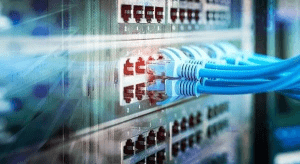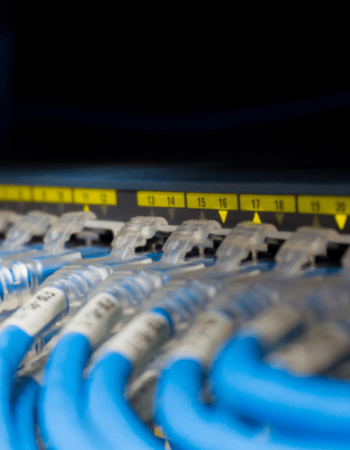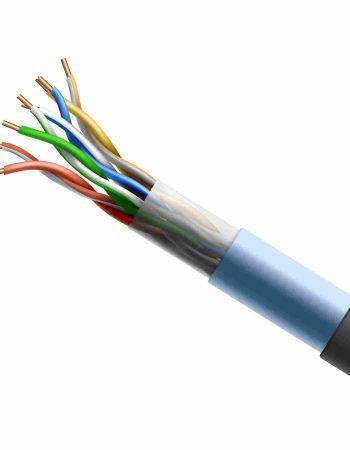The information technology infrastructure of a business organization could hold your business back. Your organization’s productivity, communication, and security can all be tied directly to one thing. If you want your IT infrastructure to work at the maximum system, ensure that all systems work well together.
As companies increasingly depend on technology to automate, reduce, and smooth operations, and improve productivity, outdated network cabling can encourage growth and overall performance.
In today’s digital era, a strong and reliable network cabling infrastructure is crucial for the success of any business. However, with time, network cabling can become outdated or insufficient to meet the demands of modern technology and growing organizational needs. This detailed blog will explore eight signs that indicate it is time to upgrade your network cabling infrastructure to ensure optimal performance, scalability, and efficiency for your business operations.
Slow Network Speeds
If your business experiences slow data transfer rates or frequent network downtime, it could be a clear sign that your cabling infrastructure is struggling to handle the increased data requirements. An outdated cabling structure can cause unnecessary delays that lead to frustrated employees and dissatisfied customers. Additionally, it is the most noticeable sign that your network cabling infrastructure needs an upgrade because of sluggish network speeds. It is an important sign that indicates your current cabling infrastructure is unable to handle the data required by your organization.
Frequent Connectivity Issues
Experiencing frequent connectivity issues within your network is akin to navigating a network path of frustration. Dropped connections, periodic outages, and full-excessive network time-outs produce an environment that slows productivity. This disruption not only affects daily operations but also compromises the effectiveness of essential systems and services. When workers find themselves grappling with connectivity channels, it’s a reflective sign that your cabling structure demands immediate attention. A comprehensive assessment, troubleshooting, and implicit upgrades are essential ways to exclude these dislocations and establish a strong and dependable network.
Outdated Cabling Standard
In the ever-evolving era of technology, your network cabling must keep pace with the times. However, it may struggle to meet the surging bandwidth demands assessed by modern operations and preference, If your structure relies on outdated norms like Category 5 or Category 5e.
This technological pause translates into bad network performance and trustability. Embracing the future-ready approach involves elevation to advanced-performance cabling norms, similar to category 6 or category 6a. This leap not only bridges the gap between your current structure and modern conditions but also positions your network to succeed in the dynamic geography of evolving technologies. Upgrading your cabling standards isn’t just an option; it’s a strategic move to the future evidence of your network and ensure excellent connectivity in the digital age.
Expansion and Growth
As your business evolves and expands, so too must your network cabling infrastructure. Growth spurts, mergers, acquisitions, or shifts in business operations can put significant pressure on your being network cabling structure. What once served may now struggle to meet the rising demands assessed by an expanding association. In similar scenarios, it becomes crucial to assess the scalability and inflexibility of your cabling structure. Transitioning to a scalable and adaptable structured cabling solution result enables your network to seamlessly accommodate growth, ensuring that it remains elegant and responsive to the evolving requirements of your organization.
Poor Cable Management
Effective cable operation is the foundation of a dependable and flexible network structure. Poor cable management practices can lead to a bundle of issues, ranging from signal interference and cable damage to severe troubleshooting problems. A disorganized, complicated mess of cables not only restricts airflow within your infrastructure but also poses safety hazards and complicates future maintenance efforts. By enforcing proper cable routing, segregation, and labeling practices, you can streamline your network cabling infrastructure, mitigate potential risks, and enhance overall system trustability. Investing in cable operation is not just about drawing up; it’s about fortifying your network foundation to repel the adversities of the latest business operations.
Aging Infrastructure
Like any technology, network cabling has a limited lifetime and can degrade over time due to wear and tear gash, environmental factors, and technological advancements. However, it may be inclined to performance declination, and signal loss, If your cabling structure is approaching or exceeding its anticipated lifetime. It’ll also lead to slow network pets and frequent downtime can severely impact hand productivity. When essential tasks take longer to complete due to connectivity issues, it can cause overall workflow effectiveness and affect missed openings. Upgrading to new, high-quality cabling materials can ensure optimal performance and life for your network.
Compliance Requirements
Changes in industry regulations, building codes, or data protection laws may bear updates to your network cabling structure to ensure compliance. Failure to cleave to applicable standards and regulations can have legal and financial consequences for your business. By upgrading your network cabling infrastructure to meet current compliance conditions, you can analyze future risks and ensure the security and integrity of your network. The rearmost cabling structure has the capability to follow all compliance conditions and regulations that ensure businesses remain set for future advancements and avoid consequences related to network structure.
Technological Advances
Advancements in networking technology, similar to faster data transmission pets, advanced bandwidth capabilities, and rising connectivity norms, may outpace the capabilities of your cabling structure. elevation to modern cabling results, similar to Category 6a or Order 7, can significantly enhance network strength and overall performance. These technologies offer advanced bandwidth capacity and reduced burden, ensuring smoother data transmission and minimum inactivity. Upgrading your network cabling infrastructure to influence the rearmost technologies can future evidence your network and ensure comity with new preferences, operations, and services.
Final Words
Upgrading your network cabling infrastructure isn’t just a matter of convenience it’s a strategic investment in the performance, trustability, and scalability of your business operations. Modern businesses deliver high-speed and dependable networks to maintain productivity and smooth communication. By recognizing the signs that indicate the need for an upgrade and taking a visionary way to update your cabling structure, you can ensure that your organization remains competitive, skillful, and prepared for future growth in an increasingly connected world.






